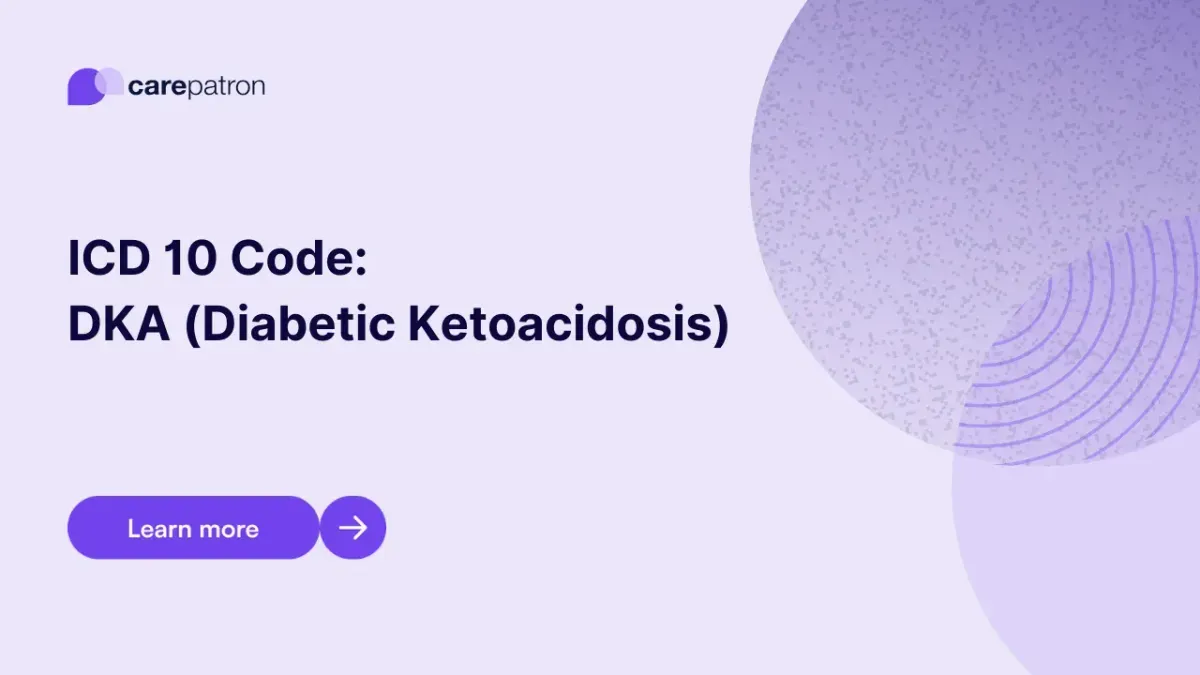
Diabetic Ketoacidosis (DKA) ICD-10-CM Codes
Learn about the common ICD-10-CM codes used for DKA through this guide.
Use Code
Commonly asked questions
DKA can be triggered by infections, stress, missed insulin doses, surgery, or certain medications. It can also arise from undiagnosed or untreated diabetes.
Treatment for DKA typically involves hospitalization and may include fluid replacement, insulin therapy, and electrolyte management to balance blood acid levels.
Regularly monitoring blood sugar levels, taking insulin as prescribed, and recognizing early symptoms can help prevent DKA. It's also essential to plan for sick days and seek medical attention if blood sugar levels remain high.
EHR and practice management software
Get started for free
*No credit card required
Free
$0/usd
Unlimited clients
Telehealth
1GB of storage
Client portal text
Automated billing and online payments
